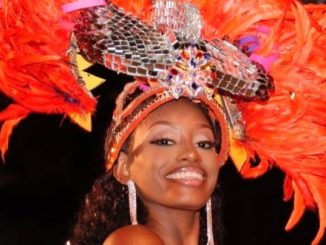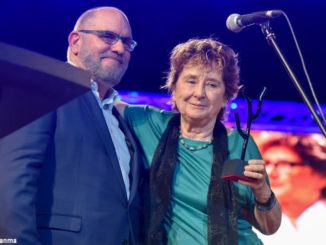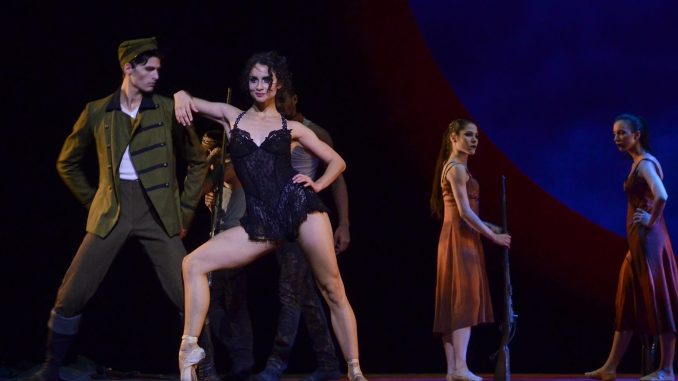
At the age of 43, Carlos Acosta did not stopped moving, creating or dancing as he announced it two years ago. Dancer, choreographer, film actor and author, it could seem pretentious for someone who was very successfull all over the world and who is already preparing his retirement. But no. The Cuban artist who is considered as one of the most international figures of the Cuban School of Ballet and one of the greatest dancers of the universal dance had one more thing to do. A personal dream that he cherished for a long time and is finally now a reality : to have his own dance company in Cuba.
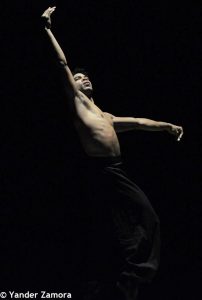 The fact took place last April, when the new dance troupe called Acosta Danza began in the Grand Theatre of Havana Alicia Alonso. Immediately, it provoked admiration and confusion of the criticism and the audience. And in a lot of people appeared a question : why create a company in Cuba if he can do it in another country?
The fact took place last April, when the new dance troupe called Acosta Danza began in the Grand Theatre of Havana Alicia Alonso. Immediately, it provoked admiration and confusion of the criticism and the audience. And in a lot of people appeared a question : why create a company in Cuba if he can do it in another country?
To dispel doubts, Carlos said that himself clearly when he announced that he said goodbye to the international scene. “I would like to create a small company which develops a neoclassical and contemporary line. Thus, the Cuban people will have a lot of time to see me dance because I want to settle here permanently. My heart is in Cuba. It always was here! “
The truth is that Carlos Acosta was always connected to his country, although his versatility, fluidity, power and passion were acclaimed all over the world. His relationship with the movement of Cuban dance was always beyond belonging to the Cuban School of Ballet, as demonstrated its constant presence in the International Ballet Festivals of Havana and his work with Danza Contemporanea de Cuba.
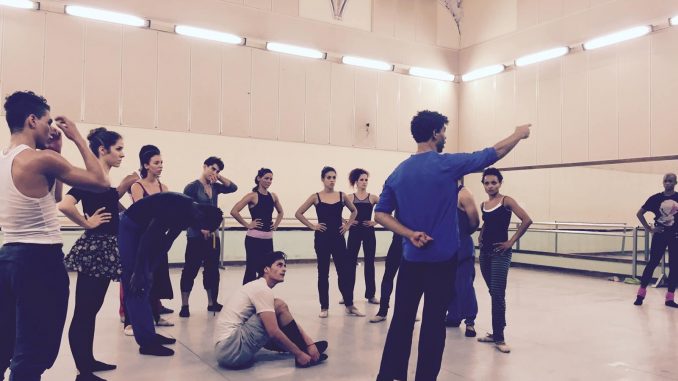
A harvest of prizes
With an impeccable technique that allowed him to evolve in the registers of the romantic-classical tradition of the nineteenth century until the most intrepid of choreographic current events, Acosta has an impressive curriculum vitae. He joined the most prestigious ballet companies in the world mainly the Royal Ballet in London and the American Ballet Theatre in New York and he performed on the most famous international stages.
In Cuba, he won the National Dance Award in 2011, he became the youngest artist to get it ; while in England, the British Royal Family awarded him one of its highest prizes : that of Commander of the Most Excellent Order of the British Empire ; Moscow awarded him the Prix Benois de la Danse.
Born and raised in one of the most low-class neighborhoods in Havana, Carlos – the youngest of 11 brothers – started dancing thanks to his father, a truck driver who drove him to ballet classes because he thought that it would be good for his discipline. He finished his studies at the elementary level of ballet at the Professional Art School in Pinar del Rio. Between 1988 and 1991, he started collecting international awards such as the Grand Prix in Lausanne, the Grand Prix of the Biennale de la Danse in Paris, the Chopin Prize of the Polish Artistic Society and Vignale Danza Prize and Leonide Massine Prize in Positano, Italy.
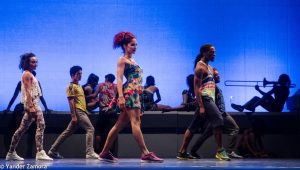
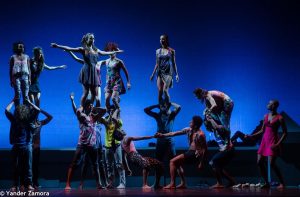 A mix of classical and modern
A mix of classical and modern
Then, he was a member of the companies English National Ballet, Ballet Nacional de Cuba, Houston Ballet in the United States, until in 1998 he joined the Royal Ballet in London, where he reached the highest artistic category, that of the Guest Principal Dancer and he also was choreographer for the new version of “Don Quixote”.
Today, the criticism recognizes in Acosta an exceptional dancer. His definitive return to Cuba and the creation of a completly national company earned him dual admiration among Cubans who always had him as a model for artists.
Composed of 25 excellent young dancers of classical ballet and modern dance, Acosta Danza broke the mold of dance training in Cuba.
With a classical and contemporary repertory, in which figured plays like “Faune” by the Belgian choreographer Sidi Larbi Cherkaoui ; “El Cruce sobre el Niágara” by the Cuban Marianela Boán ; “Alrededor no hay nada” by the Spanish Goyo Montero ; “De Punta a Cabo” by the Cuban Alexis Fernández ; “Carmen” by Acosta himself ; y “La Mort d’un Cygne” by Michel Fokine, the company was up to it on stage, with the impeccable technique of its dancers, the mix of styles that makes so special Acosta Danza.
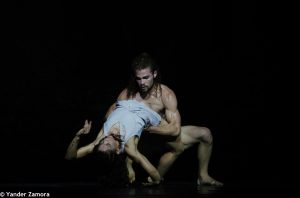
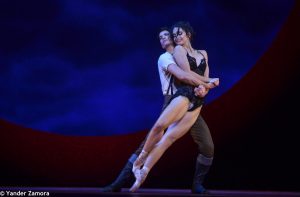 An authentic Cuban dancer
An authentic Cuban dancer
Carlos himself defends this symbiosis in his company, because its main purpose – according to what he himself declared – is to try to create a dancer who can assimilate any type of requirement in dance, work indiscriminately in both lines and try to reach a distinctive style, with an authentic Cuban line.
“I’ll try to create a dancer who can assimilate any type of requirement of dance from the neo-classical, classical to the most contemporary trends, and to put them at choreographers’ disposal so that they can dream and do whatever comes to mind. I do not want that the dancers are limited, but capable of placing themselves at the disposal of all the choreographic requirements, they have a complete training (… ). I want that there are always Cuban elements in each of our choreographies”, he says. He continues : “we are still trying to make the repertoire but I care a lot that has to see entirely with Cuba. In a globalized world, what is authentic is what defines you. I am not interested in the European things that the company could do because for that there are the Europeans. With the cultural wealth we have, I think that we can do things that nobody can have or do better than us. In Cuba, there are companies which are purely contemporary or purely classical or folk, for which I have a lot of respect”. But Acosta Danza will work indistinctly in either line and try to reach a Cuban line. That’s the challenge.
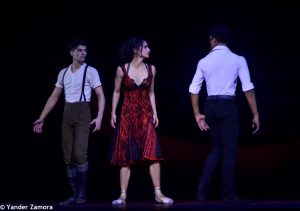
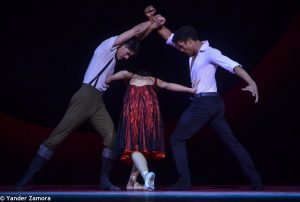 A singular artist
A singular artist
On the other hand, he hopes that the Cuban public sees in its company something different. “Acosta Danza is a different animal, so we can do something very contemporary, from dancing barefoot until making points in jeans. I intend to have a wider spectrum of possibilities and especially of Cuban things. I want that people say : this is Acosta Danza because it has a unique line in the world, refreshing, dynamic and Cuban. I do not think there is another company in Cuba with this proposal”, he says.
And for the moment, he is absolutely right. With Acosta Danza, Cuba has a new company, if it has a long way to go, it has from its creation the distinguishing mark of one of the most versatile artists that gave this Caribbean island : Carlos Acosta who can not be defined in one way because coexist in him a dancer with strength, a performer with character, a bold choreographer, a rash actor, a literary author with his autobiography “No Way Home” and his novel “Pata de Puerco”, and especially a 100% Cuban.














